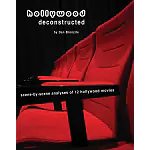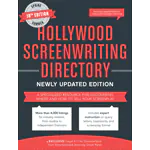Tag: screenplay
Script Studio® Launches Annual International Feature Screenwriting Contest
December 15, 2021 (London, UK) – UK technology company Nuvotech has launched its inaugural Script Studio® 2022 Feature Screenwriting Contest in the hope of discovering new international screenwriting talent.…
Script Studio® Screenwriting Software App Wins Xojo Design Award
May 1, 2019 (London, UK) – UK technology company Nuvotech is awarded the 2019 Xojo Design Award of “Best Vertical Market App” for its popular creative writing software Script…
Nuvotech Releases Script Studio® Creative Writing Software For Mac & PC
August 28, 2017 (London, UK) – UK technology company Nuvotech announces release of Script Studio® creative writing software. An Innovative Mac & Windows Program For Screenwriters, Playwrights and Novelists.…
Creating Effective Scene Transitions
Sometimes as writers we get so caught up with developing the crucial elements of a screenplay such as character arcs, plot logic, theme, structure and snappy dialogue that we…
What is the Time Frame of Your Screenplay?
When you first get the idea for a story it will probably focus around an interesting character, event, act three plot twist, high concept or thrilling action sequence, but…
The Selfless Hero
When we think of a hero in a movie we immediately assume we are talking about the central character otherwise known as the Protagonist, but many stories conceal a…
Pacing is Often the Key to a Successful Screenplay
To help you understand story pacing and how to write a script that keeps the reader turning the page it may help to think of your screenplay as a…
Humor in a Dark Place
The world we live in isn’t perfect and to be honest, although every day we all strive for perfection in one way or another, our lives would probably be…
Character Arcs are the Foundation of an Engaging Story
So what is a character arc, you ask? Sounds complicated. Well, it doesn’t have to be, although a complicated character arc may be just what your screenplay needs. A…
Budding Writers Can Realize Their Dreams with the Right Tools
Everyone has dreams, but few ever get to realize them. When it comes to screenwriting, not everyone can put a script together that will be picked up by Hollywood,…



